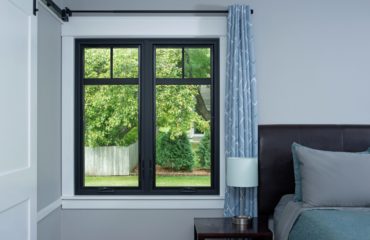Homeowners looking to save money on heating and cooling bills should explore options such as replacing their old windows with energy-efficient replacement windows. This can save anywhere from 15-25% on energy bills.However, if you’ve already replaced your windows, or aren’t ready to take that step, even small savings can add up.
Here are six simple ways to cut your energy costs.
- Change your light bulbs to energy-efficient, compact fluorescent light bulbs. (CFLs). These bulbs emit 75% less heat and use 75% less energy than traditional bulbs. Each bulb can save $30 or more over its lifetime. Change all the bulbs in your house and that’s a lot of money. CFLs are relatively cheap these days, and many stores offer sales or rebates on them.
- Turn your heating or air conditioning down at night or when you’re gone. Your house doesn’t need to be cool or snuggly warm if you’re not there, so before you leave for work, turn the thermostat down five or ten degrees. At night open a window or pile on a few extra covers to keep comfortable. Some thermostats allow you to program them, so you can set them to heat or cool your house just before you come home or wake up.
- Plant trees to shade your home. According to the US Department of Energy, the shade from trees can lower energy bills by 25%. Deciduous trees, which lose their leaves in the fall, are the best for this. These trees shade your house in the summer, then let the sunlight in to heat your home during winter. Make sure to plant at a distance of at least twice the height of a mature tree of its type to keep your house safe if it falls.
- Save your chores for later. Seriously, take the day off. Dishwashers, ovens, washers, driers, and showers all use a lot of energy and release a lot of heat into the home. Wait until early morning or late night to run these appliances so your house stays cooler during the day.
- Make sure your house is weathertight. Inspect the caulking and weatherstripping around your windows and doors. If it’s cracked, peeling, or you see gaps, then recaulk and weatherstrip it.
- Use ceiling fans. Ceiling fans use relatively little energy, but they can make a big impact on how a room feels. For fans to be the most effective, you’ll have to change the direction and speed at which they spin for different seasons. All fans should have switches that change the direction at which they spin.
- In the summer, a fan cools you by blowing air on you. As the air blows across you, you feel cooler. This is called the wind-chill effect. Set the fan so that you feel air blowing down on you.
- In the winter, warm air rises, so you want the fan to bring the cool air up, which forces the warm air down to you. Set your fan so that it runs the opposite direction it did in the summer. You should feel little or no air blowing down on you.
If you follow each of these tips, you can realize big energy savings. Planting a tree, turning on a fan, putting off your chores till evening… these are simple, easy ideas that you can put into action today.





